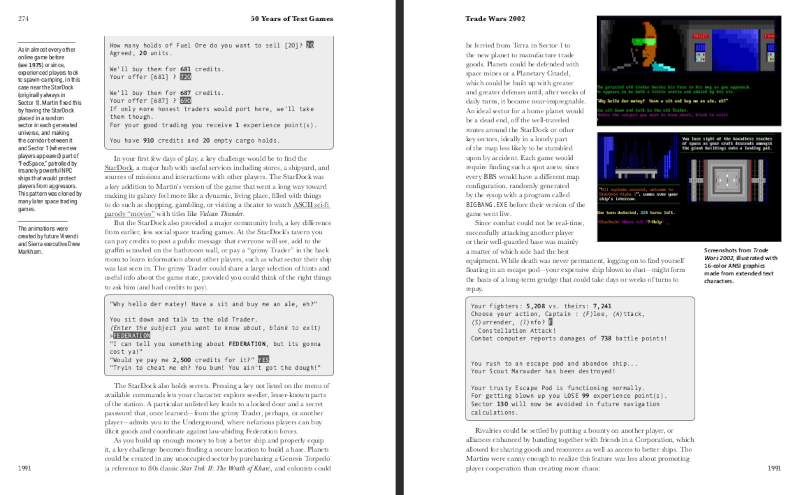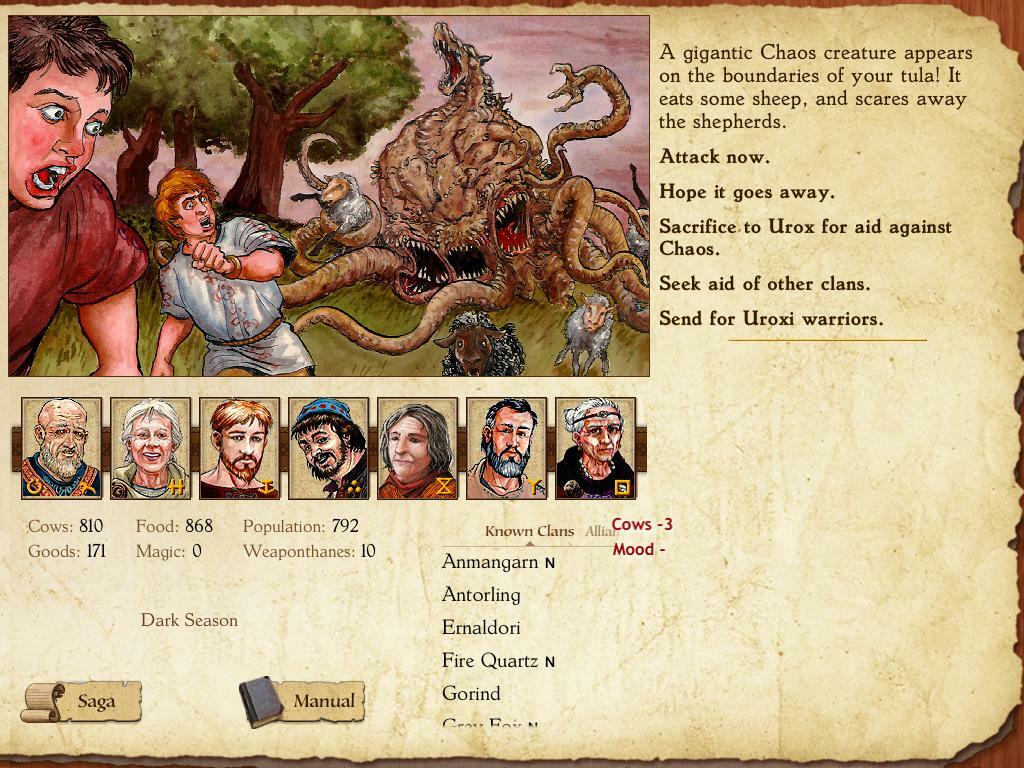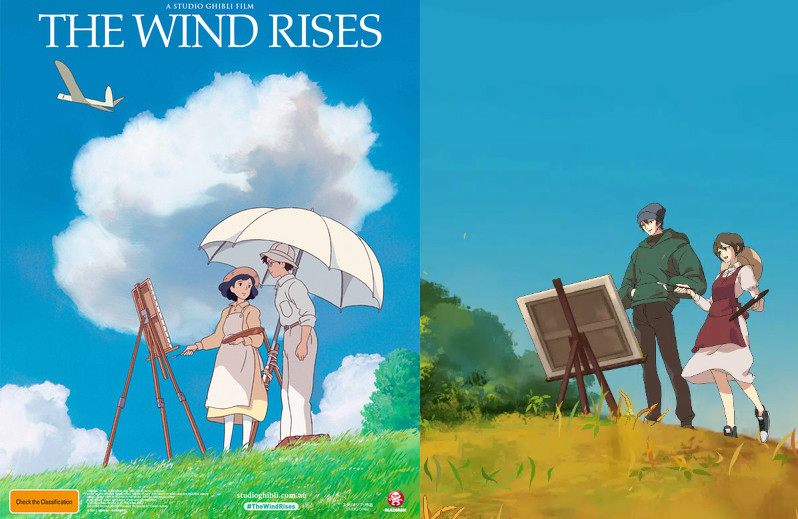Latest reviews
O hospital, em sua essência, é uma estrutura que reflete a complexidade e a contradição do ser humano. Como uma metáfora kafkiana, ele se apresenta como um labirinto onde a vida e a morte se entrelaçam em uma dança macabra. Ninguém deseja estar ali, mas todos precisam em algum momento. É um lugar de cuidado e confinamento, onde o tempo parece suspenso e a espera é a única certeza. Aqueles que se encontram sob seus cuidados são envolvidos por uma aura de incerteza e dúvida. A precisão e a clareza são substituídas por processos confusos e desorientadores, e a sensação de que nada está sob controle é constante. Cada indivíduo lida com suas próprias angústias e medos, enquanto os profissionais de saúde tentam trazer conforto e cura em meio à turbulência. O hospital é um espaço onde a fragilidade humana se mostra em sua plenitude. A vida e a morte caminham lado a lado, e a cada dia é uma nova batalha pela sobrevivência.
Ao adentrar um hospital, toda a sua vida parece ficar para trás. Seus pertences são deixados do lado de fora, incluindo o inseparável celular. Suas roupas são substituídas e uma nova rotina toma conta de você, como se fosse uma outra vida. Esqueça o trabalho, os amigos e a família. Dentro das paredes do hospital, nunca se sabe ao certo quando sairá. Pode ser em alguns dias, semanas ou até mesmo meses, se é que a saída é uma opção.
Os médicos nos hospitais parecem sempre guardar um segredo, como se escondessem algo de nós. Eles aparecem em horários pré-determinados, apenas para conferir se ainda estamos respirando, e em seguida, desaparecem novamente. Quanto aos remédios, é uma incógnita. Alguma enfermeira amável pode deixar escapar o nome de algum medicamento de vez em quando, mas isso não importa muito, já que a maioria dos nomes é um emaranhado de letras e palavras desconhecidas para nós. E, antes que possamos decifrar o que estamos tomando, os remédios já foram trocados novamente.
Ao encontrar um paciente no hospital, a primeira pergunta que surge é sempre sobre a sua condição médica: “E você? O que você tem?” Nesse ambiente, a identidade pessoal do paciente é frequentemente suprimida, seja pela própria doença ou pela estrutura hospitalar em si. Suas roupas, medicamentos, cama e alimentos são rotulados com o seu número de paciente, em vez do seu nome, reforçando essa perda de identidade. A presença de espelhos é escassa, muitas vezes restrita apenas aos banheiros com acesso limitado. O choque em ver seu próprio rosto após semanas sem se olhar no espelho pode ser surpreendente e estranho.Além disso, a mobilidade do paciente é limitada, com o acesso a qualquer lugar além da própria maca sendo uma dificuldade. É no hospital que a linha entre o ser humano e a máquina se mistura, com uma série de equipamentos hospitalares prontos para manter o corpo vivo, incluindo respiradores, monitores cardíacos, sondas e oxímetros. Gradualmente, esses dispositivos se tornam uma parte integrante do paciente, tão essenciais quanto um par de sapatos ou óculos, mas geralmente ligados a uma tomada, impedindo que o paciente se mova livremente pelo espaço.
Em meio a tudo isso, você encontrará apoio em seus colegas de enfermaria - outros indivíduos que, como você, não tiveram muita sorte e acabaram no hospital. Vocês compartilharão histórias de como adoeceram e reclamarão das parafernálias presas ao corpo que os impedem de ir ao banheiro com facilidade. Mas dificilmente falarão sobre seus passados. É como se suas vidas começassem e terminassem ali, naquele ambiente hospitalar.
Um dia, você dorme ao lado de alguém e, no dia seguinte, essa pessoa já não está mais lá. Ela pode ter falecido ou sido transferida para outro lugar. Todo mundo some, morre ou recebe alta, até que chega o momento em que você se torna o paciente que some. Você pode ser transferido para outro lugar ou, se tiver sorte, receber alta médica e voltar para casa.
Quando finalmente chega o momento de voltar para casa, você se sente como uma outra pessoa. Os momentos de fragilidade pelos quais passou no hospital mudaram a forma como você enxerga a vida. Às vezes, você se lembra de alguém que conheceu no hospital, mas não consegue mais lembrar o nome. Ou talvez você se recorde de uma enfermeira ou enfermeiro que foi gentil com você, e isso aquece o seu coração.
When we pick up a hefty tome by our favorite author, we understand that our minds will transport us into the story, with or without illustrations. Yet, with computer games, the absence of graphics or sound effects may strike many people as quaint and old-fashioned.
“50 Years of Text Games” by Aaron A. Reed makes it clear that this is itself an anachronistic way to think about games. The technology for multimedia is today both cheap and ubiquitous: hardly worth remarking upon. Screens are the canvas, the stage, and the empty page, on which any kind of story can be played. And the world of text games, it turns out, is more rich and vibrant than ever.
An enduring form of play
The $523,813 raised on Kickstarter to produce the book speak to the enduring interest in the genre, and can also be credited to Reed’s bona fides. The author’s work in interactive fiction over more than two decades includes narrative design, academic study, and a prior book teaching game development.
What is a text game? “In brief,” Reed writes, “it’s a game you want to share excerpts from, not screenshots.” Not all the games described in the book are completely without visuals, but they focus on tales and experiences conveyed through written or spoken text. They also feature at least some interactivity: the concept of a player rather than just a reader is meaningful in all of them.
After introducing the origins of text gaming before the 1970s, Reed’s approach is to pick a game for each year from 1971 to 2020, and to reflect upon its development, narrative, gameplay, and contribution to the genre.
Even if you are a longtime fan of text games, these are not necessarily the titles you have heard of. Instead of being guided by popularity alone, Reed has curated games that tell stories about the diversity of the genre and the many innovations within it.

Excerpt from the ebook for the year 1991 entry, about the BBS game “Trade Wars 2002”. The book features many quoted transcripts from the games. The printed book is in black and white. Credit: Aaron Reed (text) and original developers (screenshots). Fair use.
Masterful curation
Reed has shared first revisions of each of these chapters in his Substack newsletter. The links below point to those early revisions, though interested readers are advised to purchase the book for the final versions. Here are a few examples of Reed’s curatorial approach:
-
1979 - “The Cave of Time”. This is not a computer game, but the first “Choose Your Own Adventure” gamebook. Its inclusion reflects how game design in print and on screen can inform one another. Reed does not mention it, but the CYOA books have themselves inspired a fascinating interactive fiction game called “The Boy in the Book” (review).
-
1981 - “His Majesty’s Ship ‘Impetuous’”. This little-known title is noteworthy because of its mechanics. Here, instead of typing commands like “GET LAMP”, as was common for most early text adventures, the player completes gaps in the story as it unfolds. For example, the game may prompt the player to write a line of dialogue for the protagonist. The software then matches on keywords to infer the player’s intent, and continues the story.
-
1987 - “Plundered Hearts”. This classic text adventure by Infocom featured a female protagonist who can romance a male love interest in a pirate adventure. Instead of pursuing romance, the player can choose to ditch the guy and become a fearsome pirate queen instead. Unlike many titles before it, the game prioritizes a compelling plot over punitive and immersion-breaking puzzles.
-
1999 - “King of Dragon Pass”. Through many meaningful choices, you help a small tribe to survive and thrive in a fantasy setting. The game features vast amounts of procedurally generated text and comparatively minimalist graphics. Despite a large budget, it was a commercial failure when it was released. Today it is a cult hit that has found many new players, thanks to online distribution through platforms like Steam and GOG.
-
2005 - “Shades of Doom”. This is a first-person shooter for visually impaired players, in which complex audio cues are used to set the scene for exploration and combat. Text games are often more accessible to visually impaired players than other video games; this title makes it clear that “text” does not have to mean “no action”, or even that the text is displayed on a screen.
Each game is covered in a few pages. Thanks to the wide range of styles and stories, I enjoyed reading through the whole book, rather than just picking and choosing titles that seemed appealing. The book also includes an introduction for each decade, which names many other notable titles that readers may wish to look up.

“King of Dragon Pass” is perhaps the most richly illustrated of all the games featured in the book, but even here, it’s the procedurally generated text that takes center stage. (Credit: A. Sharp. Fair use.)
The Verdict
For readers who are interested in narrative design, the culture of games, or interactive fiction as a genre, I strongly recommend seeking out a copy of “50 Years of Text Games”.
It’s a book brimming with ideas that should inspire anyone to create and play, and to experience the full range of what games can be. It’s also a labor of love by the author, whose meticulous attention to detail and thoughtful curation make this one of the best books about games I’ve ever read.
While Reed takes great care to identify potential spoilers for the games, this is not a book for hints or walkthroughs. Similarly, if you’re looking specifically for a book about, say, Infocom-style parser games, you should know that Reed explores the full breadth and depth of what text games can be, and does not limit himself to any narrow definition.
As of this writing, the print edition of the book is sold out, but an ebook version is available.
Der Eingang des Restaurants Al-Dar ist nicht einfach zu finden und leider auch nicht zugänglich für Rollstuhlfahrer. Wenn das Wetter nicht gerade zum verweilen im Außenbereich einlädt, besteht für Menschen, die auf einen Rollstuhl angewiesen sind, leider keine Möglichkeit ins Al-Dar zu gelangen.

Ein Teller mit Hummus als Vorspeise (Das dazugehörige Fladenbrot ist leider nicht im Bild) (Eigenes Werk. Lizenz: CC-BY-SA.) Die Deko des Restaurants ist erfreulicherweise schlicht gehalten und weiß auch von der Farbwahl zu gefallen. Zum Glück gibt es wenig orientalischen Pomp. Lediglich im Außenbereich sollte ein wenig mehr der Blick für das Detail geschärft werden.
Die Speisen und Getränke sind qualitativ hochwertig und gut auf den Tellern angerichtet. Der Geschmack ist ebenfalls gut und die bringt das Gefühl des Orients in die niedersächsische Tiefebene.

Lammbraten unter Soße mit frittierten Kartoffelscheiben (Eigenes Werk. Lizenz: CC-BY-SA.) Einen Besuch im Al-Dar kann ich jedem, der sich in der Nähe aufhält, empfehlen.
Restaurants wie das bona’me muss man mögen. Das gilt auch für sehr ähnliche Ketten wie das Vapiano. Am Eingang wird eine Zahlkarte ausgegeben und die Speisen werden dann in einer offenen Showküche zubereitet und dort auch direkt der Karte zugeschrieben. Wenn sich das Team hinter dem Tresen gut versteht sehe ich keinen Unterschied zu anderen Restaurants, in denen der Küchenbetrieb meist verborgen bleibt.

Gemischter Salat mit Falafel (Eigenes Werk. Lizenz: CC-BY-SA.)
Im bona’me erinnert sehr viel an das Vapiano. Die Aufmachung von den Sitzgelegenheiten bis hin zur Aufmachung kommt mir sehr vertraut vor. Von Sofas bis hin zu hochbeinigen Gruppentischen ist alles, natürlich in anderer Form, vorhanden. Den Unterschied machen meiner Meinung nach nur die Speisen. Hier wird eine gute kurdische Küche angeboten. Wer es mag kommt auf seine Kosten.
Im entsprechenden Temperaturen bieten sich viele Außenplätze an, welche einen Blick auf die Uferpromenade und die Leine ermöglichen. Auch für Gruppen, die spontan dort essen wollen, ist ein Besuch möglich. Die Kapazität ist mehr als ausreichend. Einzig die Lautstärke der Musik empfand ich als ein wenig zu hoch.
Delete is a minesweeper-inspired puzzle game released in 2018 on Steam (Windows, mac). It is available for €1.99, and is sometimes put on sale at €1.39 (-30%) according to SteamDB.
It took me off guard by its original ideas and its clever execution: the game teaches you everything you need to know as you progress into the levels. And for the average two and a half hours this game lasts (according to HowLongToBeat; I completed it in about 2h15), I was hooked.
The music provides a particularly chill vibe, but I turned it off only to keep the sound effects, which I found especially satisfying.
Linux compatibility
Although the game is not natively available for Linux, I played it using Proton 8.0-2 and encountered absolutely no issues (see my ProtonDB report). The game ran smoothly and did not crash.
Twists and turns
Delete has a lot of inventive ideas and makes good use of them, yet I felt some of them could’ve been used in a few additional levels.
But I haven’t even told you what these “twists” were yet!
Picture yourself a minesweeper game. Now make it 3D! That’s the main twist of the game.
Now that we’ve got some 3D, what could come with it? You guessed it (or maybe not!): translations and rotations!
The last levels make a particularly good use of the moving parts of the “game board”. You need to be astute as to how and when you uncover cases or flag them for hiding a bomb underneath!
I won’t go into more details here, as I think it would ruin some of the fun of discovering the game.
If you like puzzle games, if you love(d) playing Minesweeper on Windows, then definitely go check it out. It’s a breath of fresh air, it’s fun, and it’s great on a budget, even if it’s a tad short!
Lines Infinite, released in 2017 on Steam (Linux, Windows and mac), is a puzzle game available at a ridiculously low price (€0.99, and often discounted at €0.29 according to steamdb).
It comes with a hundred numberlink puzzles, which are logic puzzles involving connecting numbers on a grid (see Wikipedia), and a quickly-annoying music and sound effects, which I ended up muting after 20 minutes of play time.
The UI is good, because there’s no useless stuff: you boot the game, and you can immediately start playing it - there’s no main menu, no “save” to load. You pick the level you want to play, and there you go. But that’s about it, as you’ll quickly be frustrated by the inability to “redraw” or “continue” a line without having to erase it.
Moreover, this game is plagued by its (non-existent) difficulty curve: early-game levels felt somehow harder than mid-game ones, whereas you sometimes encounter extremely easy levels seemingly out of nowhere. Balancing the difficulty in puzzle games is known to be a tricky matter, but said absence of a difficulty curve annihilates all sense of progress you might get, aside from the Steam achievements.
Finally, a tutorial could help onboard players that do not know how numberlink puzzles work. I don’t say it’s necessary, but it might have helped improve my opinion about this game.
To put things in a nutshell: Lines Infinite remains a decent puzzle game, thanks to its price and the average 3 hours of playtime you can expect from it (according to HowLongToBeat).
Never before did I crave to read every bit of text a mobile game had to offer. And I had a good reason to do so: once I’d have left, all I couldn’t explore was lost forever.
Beyond the Chiron Gate is the newest (released in 2022) entry in interactive fiction games by John Ayliff, a solo indie game developer whose other works might already be familiar to you if you read previous reviews on this very website (see Eloquence’s review of Seedship). And this game is the first one of Ayliff’s to be charged, at a (hefty) $10 price tag.
Overall, the feeling of wonder that gets you through text and the beautiful soundtrack is the main fuel of this game. It’s what kept me going until I reached the ending (which there seems to be many of!). Let me explain the setting: a probe discovered a weird thing at asteroid 2060 Chiron. Turns out, it’s a Gate to unknown reaches of space. And you get to manage a spaceship, a crew, and discover new technologies in your quest to uncover the secrets of this awesome - yet dangerous - mean of transportation, and, if you are good enough at this role, to harness it for the betterment of mankind!
Unless you’re playing like a douchebag and don’t mind getting your crew members dying over and over again, the average play time is about 2 hours. It’s a tad long to achieve in a single sitting, but this is what I recommend you do, as you will be fully “immersed” in the setting.
The game has you managing a few resources, none of them being particularly difficult to get or keep, yet you will sometimes feel like you’ll never have enough. And trust me, you won’t. The same applies for your crew members : they can get injured, or even die, and in the former case they’ll need some time to recover before being “recruitable” again for your crew. And you’ll regret not having a xenobiologist available when you are desperately craving those forsaken xeno research points!
To put things in a nutshell: Beyond the Chiron Gate is fun, especially when you want to relax in the couch or the bed with your phone. And it’s definitely a huge step up from Ayliff’s previous catalog. However, given its $10 price tag, it suffers from the repetitiveness of some of the events that occur, sometimes making the game feel “shallow” while it often demonstrates otherwise.
Yet Ayliff’s been making these Sci-Fi interactive fiction games for quite a while now, and all of them were available for free. Thus, I actually don’t mind paying $10 for Beyond the Chiron Gate. I had a great time playing it, and will certainly come back to it if the urge to explore the unexplored hits me again.
Stay safe, commander. No one knows what lies behind the Gate.
Behind the Frame, released in 2021, is the first game from Taiwanese indie developer Silver Lining Studio. You play as a young artist named Amber, who is poised to complete her final painting for a gallery submission.
I was grateful that no artistic skill is required of the player. Instead, you simply click and drag (or touch) areas of the screen to paint parts of the canvas in the required color. When you are not painting, you explore Amber’s quaint apartment, make breakfast, and solve seemingly inconsequential puzzles.

Behind the Frame’s visual style draws heavy inspiration from the movies of Studio Ghibli. One scene pays visual homage to Miyazaki’s “The Wind Rises”. (Credit: Studio Ghibli / Silver Lining Studios. Fair use.)
As the story advances, it becomes clear that all is not as it seems. Amber is persistently disoriented, her life seems to be circumscribed by the walls of her apartment, and a mysterious old painter across the street comes into play.
The game’s runtime is a little over two hours, which includes a secondary story that unlocks after your first playthrough. The game grabs your attention with its gorgeous art style, which draws obvious inspiration from Studio Ghibli; interactive sequences are interspersed with full-screen cut scenes.
Behind the Frame’s ambience is underscored by a soundtrack that skillfully blends cello, piano, guitar and the Flügelhorn, and which perfectly suits the cozy but slightly forlorn vibes of the game.
Given its short runtime, the less you read about the story going in, the better. Suffice it to say that the story is not entirely straightforward, and like a painting, will likely resonate quite differently for different players.
I found some of the puzzle mechanics a bit tedious, and while I enjoyed the story, it did not move me as much as the short and poignant Florence or the brilliant What Remains of Edith Finch.
Don’t expect a masterpiece, but if you’re looking for a cozy game with gorgeous art and music and a small mystery to unravel, Behind the Frame is a fine choice. I played it on the Steam Deck without issues, and would strongly recommend playing with a mouse or touchscreen, not a controller.
Die Inschrift am zweiten Haupttor der Festung VII in Posen macht gleich mehr als deutlich, worum es bei diesem Museum geht. In Frakturschrift steht in großen, schwarzen Lettern auf Beton “Konzentrationslager-Posen”.

Eingangstor im Fort VII mit der Inschrift Konzentrationslager Posen (Eigenes Werk. Lizenz: CC-BY-SA.) In den vielen zugänglichen Räumen, die zu einem sehr großen Teil als Hafträume dienten, wird durch Berichte von Augenzeugen auf die Greuel, die diese inhaftierten Personen erleben mussten aufmerksam gemacht. Die mehrsprachigen Texte in Verbindung mit den engen und duster gehaltenen Räumen geben den Eindruck wieder, den das Fort als Haftlager auf die Häftlinge gemacht haben muss.
Die weitgehend erhaltenen Aussenanlagen geben den Stand als Fort der Stadtverteidigung wieder und nur selten wird ein Bezug zur Zeit der Besetzung durch die Nationalsozialisten hergestellt. Ausserhalb des Forts ist mittlerweile die Vegetation so weit fortgeschritten, das ein Blick auf die damals zu verteidigenden Gebiete nicht mehr möglich ist.
Das Museum hat bei mir einen tiefen Eindruck hinterlassen und sollte, obwohl es etwas abseits des Stadtzentrums gelegen ist, unbedingt besucht werden.
Das Fort ist von Dienstag bis Samstag von 9:00 bis 16:00 und Sonntags von 10:00 bis 16:00 geöffnet. Der Eintritt ist frei.

The Vegan Breakfast
I had dinner in the city centre branch of the StäV a few days ago and it was okay. Then I found it at the airport when I was looking for breakfast. They have a vegan breakfast that’s super tasty, freshly made, and, for an airport anyway, keenly priced. I liked it a lot. Probably one of the best vegan airport breakfasts I had so far.
They also have other clearly labeled vegan dishes.
